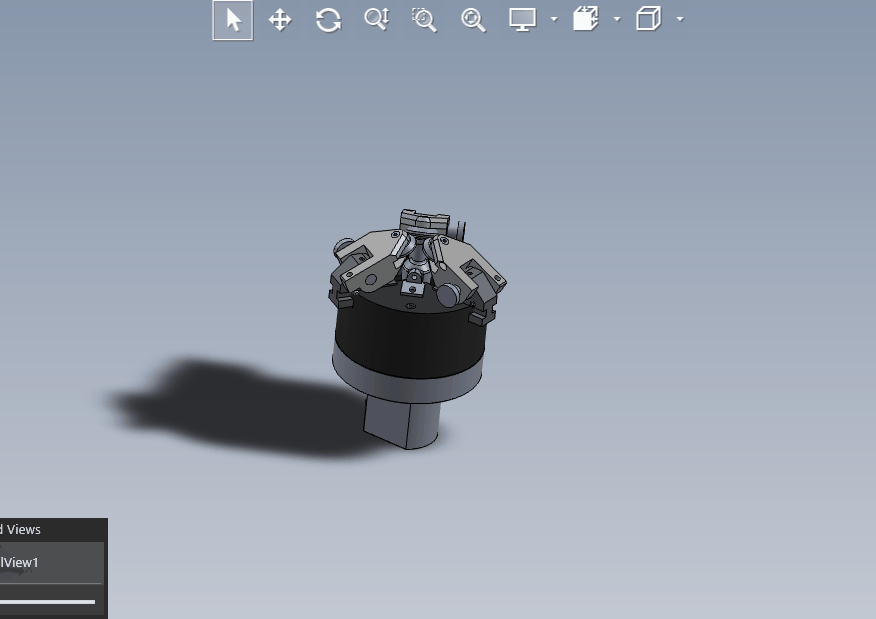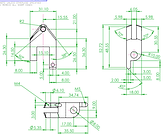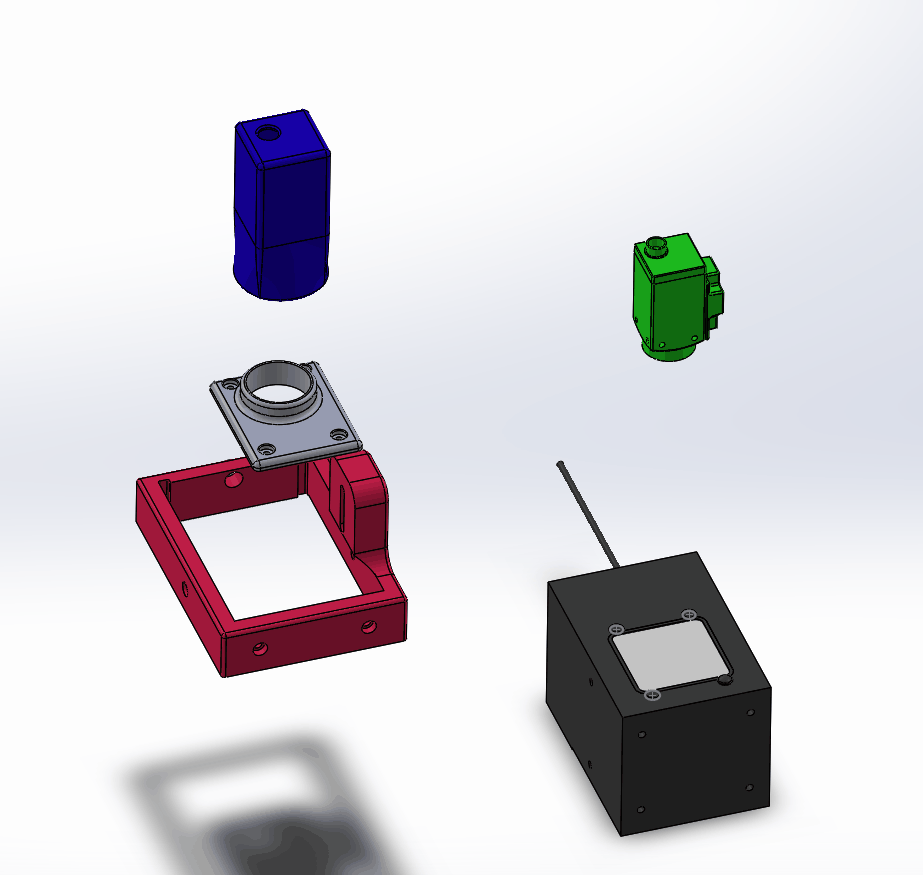Solidworks
On this page I'm sharing some of my 3D and 2D CAD work. All work presented here was done in Solidworks. I started using Solidoworks in 2014 for some of my home projects. Once I was given a chance to use it at work my skills started developing rapidlly. During my work I revers engineered 100's of objects creating a 3d models and then 2d drawings. The drawings were sent to our suppliers to manufacture these parts. I also worked on my own designs. Some of them were a incremental develpment of the objects I reverse engineered and some of them were my ideas. Working with the 3d CAD software is something I really enjoy.
Constrains:
1. Envelope available for the loader
2. Loading jaws - I was not able to fit anything better in the available envelope)
2. Loading tubes - large number in stock, high cost of replacment, small gain from redesign.
Areas for improvement:
1. Transfer cylinder life - this was improved by adding a cylinder guide rod with the linear bearing. This solution cost 1/3 of the standard guided cylinder without compromising quality.
2. Wear plates on the top of the transfer block. Made of gauge plate and hardened to 45-48 HRC, There was no need to buy replacement parts for 4 years when the previous design lasted 3 months.
3. Transfer box protecting plates eliminated replacing transfer box, also made of the harden gauge plate.
4. Harden guided plate for bearing responsible for pivot movement eliminated the need for the main carrier to be reworked or replaced.
5. Side manifold allowing for quick plate changeover and offline setting. All timing settings are preserved and the loader change procedure is shortened from 2 hours to 15 minutes.
Automated Part Loader
This work was done as a part of the "Fire prevention project". I was assigned with the task to reduce a number of fires on the centre less grinding process. In the year project started we had a 43 fires on the grinding machines. After investigation I identified that some of the fires were caused by poor setting and I proposed operators training program. Hovewer, the majority of the fires was caused by the poor condition of the loaders. After further investigation I discovered that this is linked to the design of the loader and the material selection. I started with the reverse engineering the whol assemblly and I identified aspects for improvment. I get centreless grinding machine operators involved to gather their feedback about the current design, then I correlated this with the list of the items we were ordering as a spare parts for the existing loader. At this stage I knew which part of the loader are failing first and I had a list of the consumable tooling we have in stock. I had to leave some aspects of the laoder unchanged as we had a large number of tooling in plcae and replacing this will not be feasible. Amerd with all this knowleage I stared redesiging the loader consulting my ideas with the operators and gthering their feedback. I turned all 3D models into 2D CAD drawings, prepared a BOM and get parts on order. I assemblled a first prototype and get it fitted on the machine, after testing we ordered and replaced loaders on another 6 machines. These loaders are still on the machines 4 years later operating 24/7 without any recorded failure. number of fires dropped to 4-6 per year with all fires being related to human error or poor blanks.
Rolling Chuck
I reverse-engineered the whole assembly, identified off shelf items, prepared a BOM and ordered parts. This resulted in 60% saving compared to the OEM prices.





Custom workholding design
This custom design allowed for the manufacturing a new head style product on the existing lathes, part was sourced locally improving lead time and price.
Part Screening Machine
This is a concept of the component screening machine feeding system. The feeding meachanism was designed to transfer parts from the linear vibratory rail and present them to the vision system. Based on the results of the vision inspection parts were ejected to one of the catch pans. This project never get pass the prototyping stage due to the project budged cuts.


Inspection Room
Complete design of the inspection room taking in account work flow, sequence of checks and ergonomics of the work station. Building this room as a part of the autonomus production unit allowed for shorthening throughoutput time as the production department was not any longer dependent from the Quality Inspection Department and quality inspection could be competed as soon as last production operation was finished.
Vision system enclosure
Enclosure and mounting for the vision system camera and light source. I designed this elements when working on the "Part Screening Machine". This elements were reporpused and used on the "Part marking machine". Red, purple and light grey elements were 3D printed in house an fitted on production equipment. They are still in use 4 years later.
